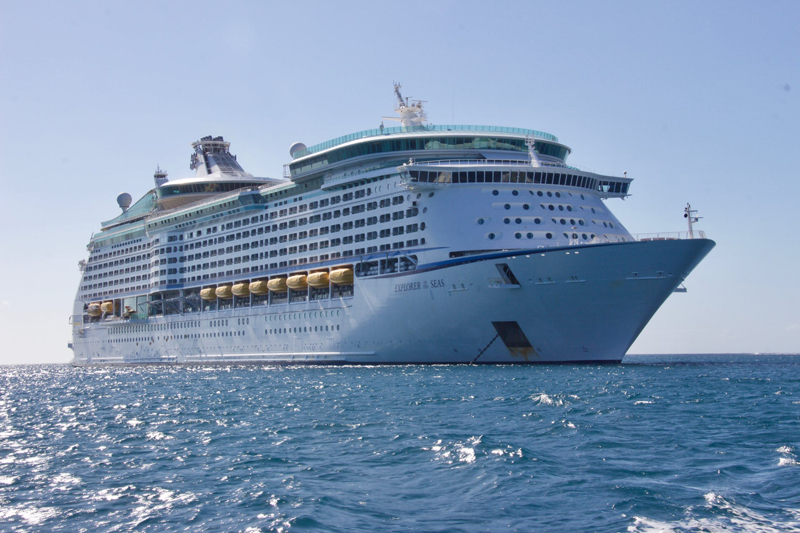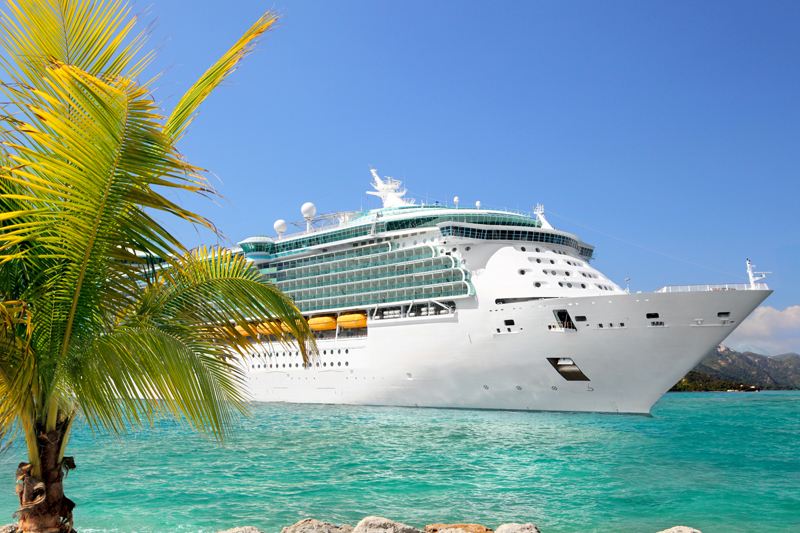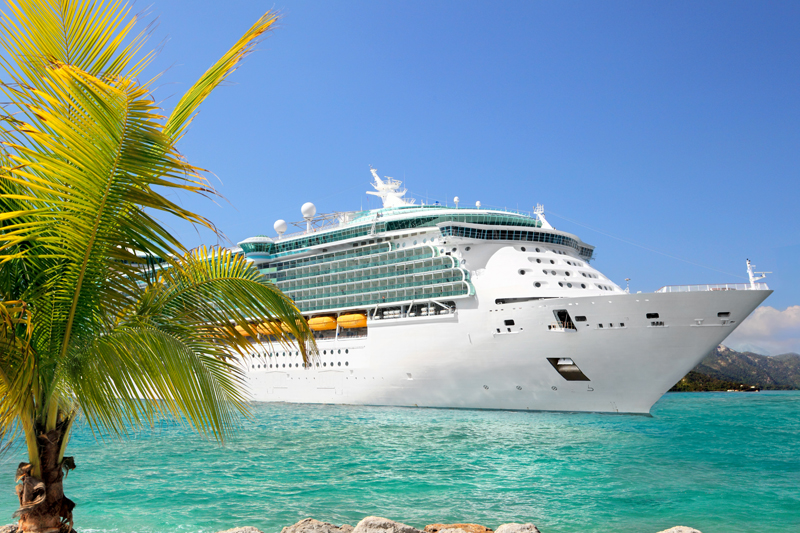9 Tips For Your European Cruise

Cruising is a wonderful way to discover the charms of Europe. European destinations offer a rich tapestry of cultural, adventure and learning experiences for travelers of all ages. With the current strength of the U.S. dollar, European cruise vacations are generating significant interest and bookings.
If you’re planning to take a European cruise vacation, here are nine tips to help you prepare for your trip.
1. Set Up Your Credit Cards. Many credit card companies charge foreign exchange fees for card usage in Europe. If you’re planning to make a significant number of purchases, look into getting a card that does not charge these kinds of fees. In addition, call your credit card companies and your bank several days before departure to let them know that you'll be traveling, your dates of travel, and the destinations that you will be visiting. By contacting your credit card companies and bank in advance, you’ll ensure your credit cards and ATM card will be available for use overseas. Make sure to mention the countries you’ll be connecting through as well, just in case you miss connecting flights and have to stay there overnight.
2. Manage Any Food Allergy Issues. Traveling in Europe with food allergies can be stressful, but cruise lines can make it easy. On our recent Uniworld Boutique River Cruise Collection cruise in Europe, the Restaurant Manager and Executive Chef went out of their way to meet the special dining requirements of guests. The Restaurant Manager reviewed the menu and buffet items at every meal for each guest with food allergies, and the Executive Chef cooked courses without certain ingredients whenever possible. If your family includes someone with food allergies, alert your cruise line well in advance. Talk with the Restaurant Manager once onboard to determine the best way to approach dining on your ship. If your child has food allergies, it’s wise to alert the kids’ program staff as well. In addition, print out cards in the languages of the countries you’ll be visiting that accurately describe your food allergy issues. These can be very helpful when dining ashore.
3. Make Copies of Your Passport Photo Page. Make copies of important documents including your passport photo page and other key items. Keep copies with you in several places and leave one set at home with someone who could fax them to you if needed. Scan a copy of your passport photo page and email it to yourself and/or keep it in your Dropbox file. If you’re planning on shopping in Europe, you might want to bring along a copy of your passport photo page. It may provide enough documentation to get an immediate VAT refund if you’ve purchased the required dollar amount in a single day.
4. Research Local Holidays and Customs. Before departure, check online to see if you’ll be traveling during a country-wide or religious holiday. These events can affect shopping and touring options, but they can also create unique opportunities to participate in festivals and special events. Review local customs, such as shop hours, museum schedules and acceptable dress codes for entering religious sites. On ships offering a more intimate setting, such as a Uniworld river cruise, your Cruise Manager will be aware of these details and will inform guests onboard so that they can get the most out of their European experience. That’s one of the many benefits of sailing on these kinds of ships.
5. Pack Comfortable Shoes. Shore excursions in Europe generally involve a lot of walking. Bring along comfortable shoes that will help you handle cobblestones and long flights of steps. If you’re planning to buy new shoes for your trip, do so several months in advance and break them in for a relaxed fit. If you are relatively sedentary, it’s wise to start walking for 20-30 minutes a day four times a week to get ready for your trip. If walking isn’t easy for you, check with your cruise line to see what types of excursions are available. Uniworld offers “Gentle Walkers” options on the majority of their shore excursions, allowing guests with less mobility to enjoy exploring at a more relaxed pace if desired.
6. Arrive A Day or Two Early. Getting to a European cruise port often involves flight connections. Delays and flight cancellations can be quite common these days. When snafus like that happen, guests (and their luggage) can sometimes miss the ship. Arrive at your embarkation port at least a day or two in advance to allow for potential delays and adjusting to time zone changes. In addition, major attractions in departure cities like Amsterdam and Venice are tough to pack into just one day. So, schedule some extra time there to explore.
7. Plan Your Shore Excursions. Exploring vibrant cities, taking in historic sites and enjoying authentic local experiences are the major reasons vacationers come to Europe. That’s what the cruise experience is all about, so spend time planning your shore excursions. On a Uniworld river cruise, almost all shore excursion options are included as part of their all-inclusive approach to cruising. This isn’t the case with all cruise lines, however. Some large ship shore excursions can be expensive, so make a budget and research your options. Make advance reservations for large ship excursions and private tours in key areas, as popular choices can sell out in advance.
8. Arrange To Stay in Touch. If you’re planning to use your cell phone in Europe, check with your service provider. You may want to modify your plan for international use during the time that you’ll be gone. If not, put your phone on airplane mode and operate it on Wi-Fi only. Alternatively, some international travelers choose to unlock their phone and purchase a local SIM card when they arrive in Europe. Check out the various Internet usage options on your ship. Uniworld provides free ship-wide Internet and Wi-Fi access on their ships. Other large ship cruise lines offer a choice of paid Internet plans. Connecting at local Internet cafes and restaurants ashore is often possible as well.
9. Arrive With Local Currency. This is particularly true if you’re staying at a hotel before your cruise. Many taxis in Europe do not take credit cards. Before stepping into a taxi, make sure to check the fare. Once you’ve arrived at the hotel, use your phone to take a picture of your hotel’s name and the street signs near it. It will make it easier for you to navigate or catch a cab in case you get lost. If you’ve arranged a transfer from the airport straight to the ship, you should have no worries at all. Uniworld’s direct transfers, which are part of their all-inclusive program, makes transportation quick and easy.
For more information about Uniworld Boutique River Cruise Collection, visit www.uniworld.com.
If you’re planning to take a European cruise vacation, here are nine tips to help you prepare for your trip.
1. Set Up Your Credit Cards. Many credit card companies charge foreign exchange fees for card usage in Europe. If you’re planning to make a significant number of purchases, look into getting a card that does not charge these kinds of fees. In addition, call your credit card companies and your bank several days before departure to let them know that you'll be traveling, your dates of travel, and the destinations that you will be visiting. By contacting your credit card companies and bank in advance, you’ll ensure your credit cards and ATM card will be available for use overseas. Make sure to mention the countries you’ll be connecting through as well, just in case you miss connecting flights and have to stay there overnight.
2. Manage Any Food Allergy Issues. Traveling in Europe with food allergies can be stressful, but cruise lines can make it easy. On our recent Uniworld Boutique River Cruise Collection cruise in Europe, the Restaurant Manager and Executive Chef went out of their way to meet the special dining requirements of guests. The Restaurant Manager reviewed the menu and buffet items at every meal for each guest with food allergies, and the Executive Chef cooked courses without certain ingredients whenever possible. If your family includes someone with food allergies, alert your cruise line well in advance. Talk with the Restaurant Manager once onboard to determine the best way to approach dining on your ship. If your child has food allergies, it’s wise to alert the kids’ program staff as well. In addition, print out cards in the languages of the countries you’ll be visiting that accurately describe your food allergy issues. These can be very helpful when dining ashore.
3. Make Copies of Your Passport Photo Page. Make copies of important documents including your passport photo page and other key items. Keep copies with you in several places and leave one set at home with someone who could fax them to you if needed. Scan a copy of your passport photo page and email it to yourself and/or keep it in your Dropbox file. If you’re planning on shopping in Europe, you might want to bring along a copy of your passport photo page. It may provide enough documentation to get an immediate VAT refund if you’ve purchased the required dollar amount in a single day.
4. Research Local Holidays and Customs. Before departure, check online to see if you’ll be traveling during a country-wide or religious holiday. These events can affect shopping and touring options, but they can also create unique opportunities to participate in festivals and special events. Review local customs, such as shop hours, museum schedules and acceptable dress codes for entering religious sites. On ships offering a more intimate setting, such as a Uniworld river cruise, your Cruise Manager will be aware of these details and will inform guests onboard so that they can get the most out of their European experience. That’s one of the many benefits of sailing on these kinds of ships.
5. Pack Comfortable Shoes. Shore excursions in Europe generally involve a lot of walking. Bring along comfortable shoes that will help you handle cobblestones and long flights of steps. If you’re planning to buy new shoes for your trip, do so several months in advance and break them in for a relaxed fit. If you are relatively sedentary, it’s wise to start walking for 20-30 minutes a day four times a week to get ready for your trip. If walking isn’t easy for you, check with your cruise line to see what types of excursions are available. Uniworld offers “Gentle Walkers” options on the majority of their shore excursions, allowing guests with less mobility to enjoy exploring at a more relaxed pace if desired.
6. Arrive A Day or Two Early. Getting to a European cruise port often involves flight connections. Delays and flight cancellations can be quite common these days. When snafus like that happen, guests (and their luggage) can sometimes miss the ship. Arrive at your embarkation port at least a day or two in advance to allow for potential delays and adjusting to time zone changes. In addition, major attractions in departure cities like Amsterdam and Venice are tough to pack into just one day. So, schedule some extra time there to explore.
7. Plan Your Shore Excursions. Exploring vibrant cities, taking in historic sites and enjoying authentic local experiences are the major reasons vacationers come to Europe. That’s what the cruise experience is all about, so spend time planning your shore excursions. On a Uniworld river cruise, almost all shore excursion options are included as part of their all-inclusive approach to cruising. This isn’t the case with all cruise lines, however. Some large ship shore excursions can be expensive, so make a budget and research your options. Make advance reservations for large ship excursions and private tours in key areas, as popular choices can sell out in advance.
8. Arrange To Stay in Touch. If you’re planning to use your cell phone in Europe, check with your service provider. You may want to modify your plan for international use during the time that you’ll be gone. If not, put your phone on airplane mode and operate it on Wi-Fi only. Alternatively, some international travelers choose to unlock their phone and purchase a local SIM card when they arrive in Europe. Check out the various Internet usage options on your ship. Uniworld provides free ship-wide Internet and Wi-Fi access on their ships. Other large ship cruise lines offer a choice of paid Internet plans. Connecting at local Internet cafes and restaurants ashore is often possible as well.
9. Arrive With Local Currency. This is particularly true if you’re staying at a hotel before your cruise. Many taxis in Europe do not take credit cards. Before stepping into a taxi, make sure to check the fare. Once you’ve arrived at the hotel, use your phone to take a picture of your hotel’s name and the street signs near it. It will make it easier for you to navigate or catch a cab in case you get lost. If you’ve arranged a transfer from the airport straight to the ship, you should have no worries at all. Uniworld’s direct transfers, which are part of their all-inclusive program, makes transportation quick and easy.
For more information about Uniworld Boutique River Cruise Collection, visit www.uniworld.com.

Related Articles
Editor's Picks Articles
Top Ten Articles
Previous Features
Site Map
Content copyright © 2023 by Nancy Schretter. All rights reserved.
This content was written by Nancy Schretter. If you wish to use this content in any manner, you need written permission. Contact Nancy Schretter for details.






